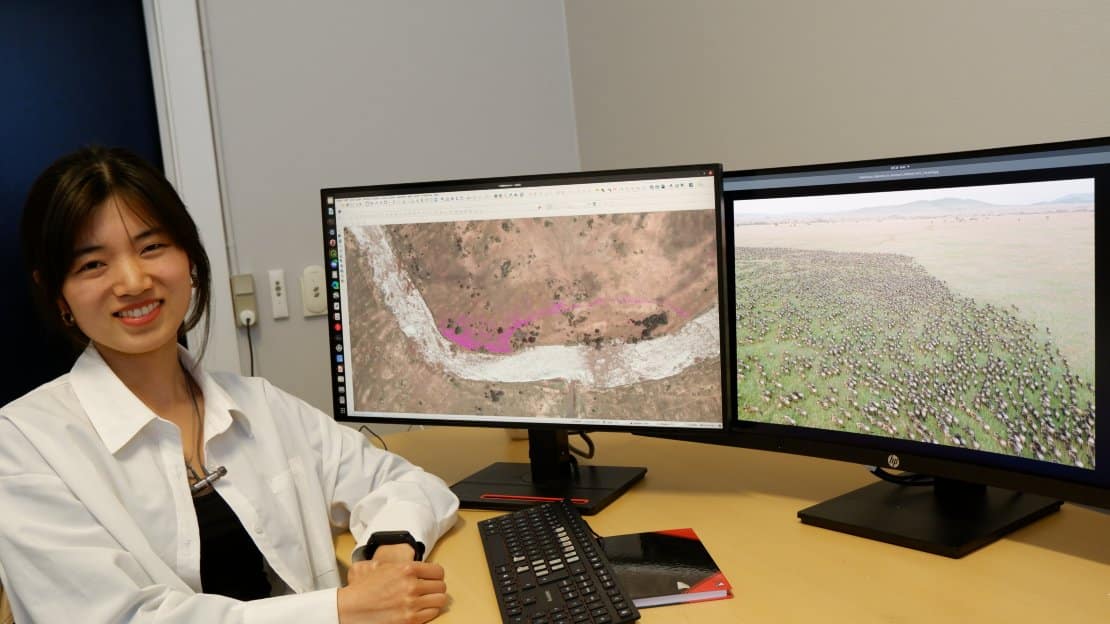
The “Great Wildebeest Migration” is the largest migration of land mammals on our planet. This mass movement stimulates multiple ecological processes that contribute to human and animal health throughout the region. However, climate change and changes in land cover threaten this natural process. In a short time, accurate, cost-effective monitoring methods became necessary. Those methods help protect the wildebeest and the ecosystem. University associate professor Tiejun Wang and his master’s student Zijing Wu developed satellite data and artificial intelligence to automatically and accurately count very large populations of wildebeest and zebra. A huge challenge in the diverse landscape.
Wang and Wu can use their method to locate large herds of migratory ungulates (wildebeest and zebra). They did this in the Serengeti-Mara ecosystem using fine-resolution satellite images (38-50 cm). In this way, they tracked 500,000 individuals over thousands of square kilometers and multiple habitat types. They recently published their results in the scientific journal Nature Communications.
“The UN adopted a global biodiversity framework during the 15th UN Biodiversity Framework is. This is the first year of implementing that post-2020 framework. Recently, the UN also adopted the Sustainable Development Goals. And in addition, the Intergovernmental Platform on Biodiversity and Ecosystem Services organized the first round of risk assessments of biodiversity and ecosystem services,” Tiejun explained. “Due to unprecedented biodiversity loss and missing knowledge, it is necessary to integrate biodiversity measurements on Earth and from space. Combining bottom-up and top-down approaches for biodiversity monitoring has never been more crucial.”
AI plus remote sensing with satellites
New satellite remote sensing and machine learning techniques make it possible to monitor global biodiversity with speed and precision. These efficiencies promise to reveal novel ecological insights at spatial scales which are germane to the management of populations and entire ecosystems. Tiejun Wang’s research demonstrates, for the first time, the capability of satellite remote sensing and machine learning techniques to automatically and accurately count very large populations of terrestrial mammals across a highly heterogeneous landscape.
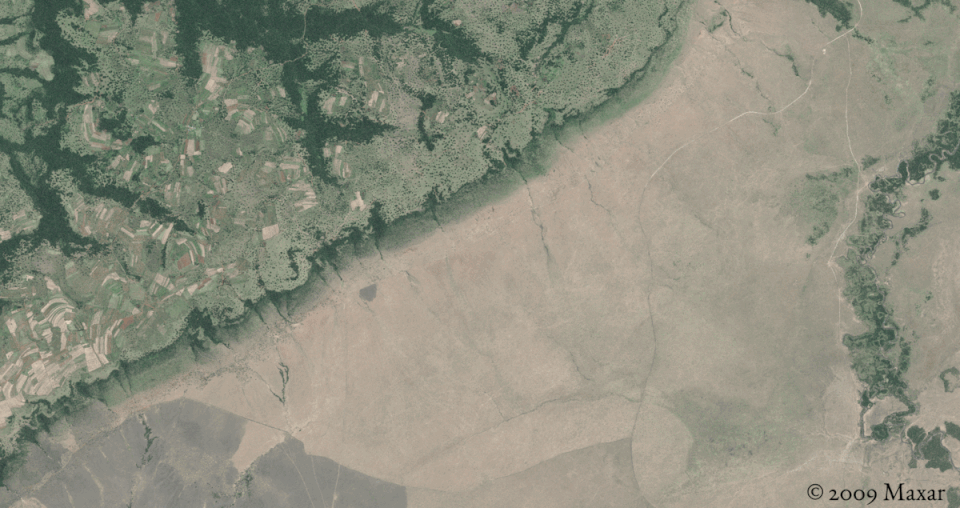
Approximately 120.000 individual wildebeests are accurately detected by the algorithm in this large area. Each purple dot is one wildebeest.
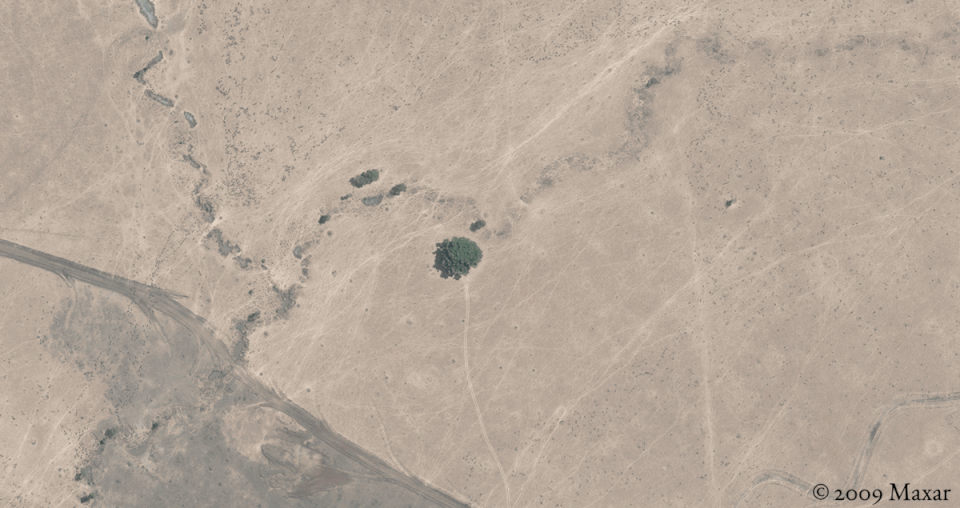 Wildebeests are caught avoiding a tree, presumably due to the presence of lions under its shadow. Wildebeests are caught avoiding a tree, presumably due to the presence of lions under its shadow. | 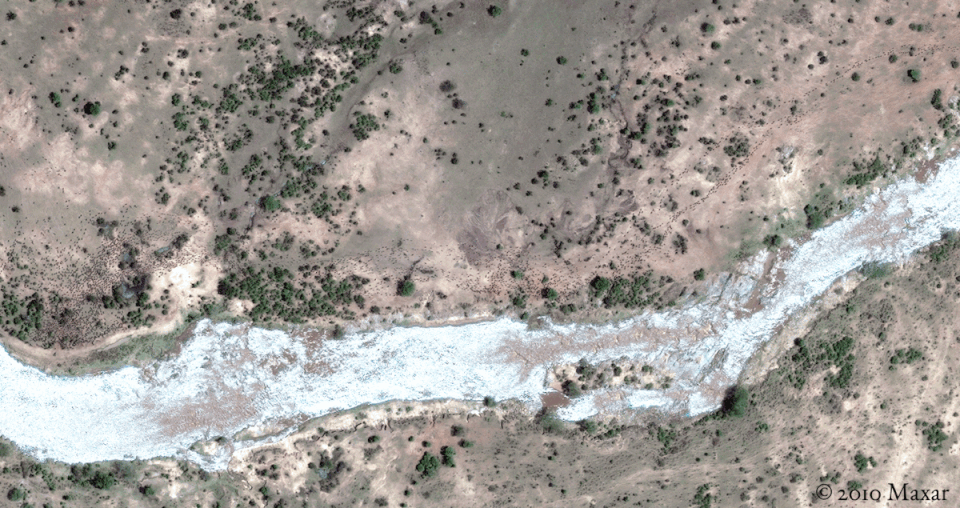 The wildebeest are massing along the bank of the Mara River ahead of crossing. The wildebeest are massing along the bank of the Mara River ahead of crossing. |
COUNTING WILDEBEEST FROM SPACE
New satellite sensing and artificial intelligence techniques make it possible to quickly and accurately monitor global biodiversity. This reveals new ecological insights important for managing populations and entire ecosystems. Using satellite remote sensing and artificial intelligence techniques, Tiejun Wang automatically and accurately maps huge populations of land mammals for the first time.
Counting wildebeest from space
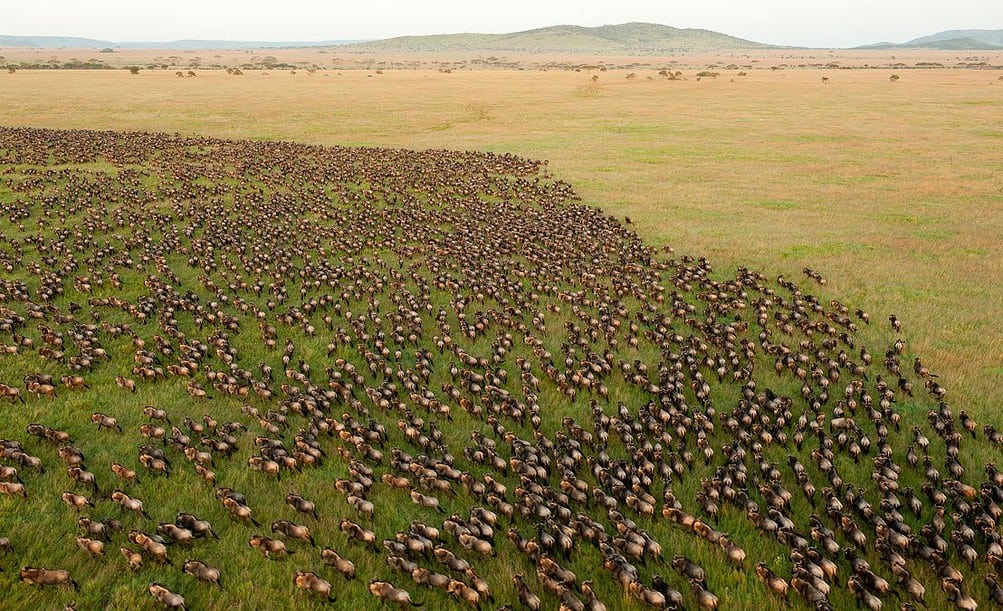
The study produced accurate results and the largest training dataset ever from a satellite-based wildlife survey (53,906 annotations). In addition to providing an open-source and transferable method for satellite-based biodiversity research, the technique is scalable for the first-ever total counts of migratory ungulates in open landscapes.
Learn more
Dr. Tiejun Wang is an associate professor of Remote Sensing and Geospatial Ecology at the Department of Natural Resources (Faculty of ITC – University of Twente). His paper, entitled ‘Deep learning enables satellite-based monitoring of large populations of terrestrial mammals across heterogeneous landscape’, has been published in the scientific journal Nature Communications. It is open access and can be read online.

